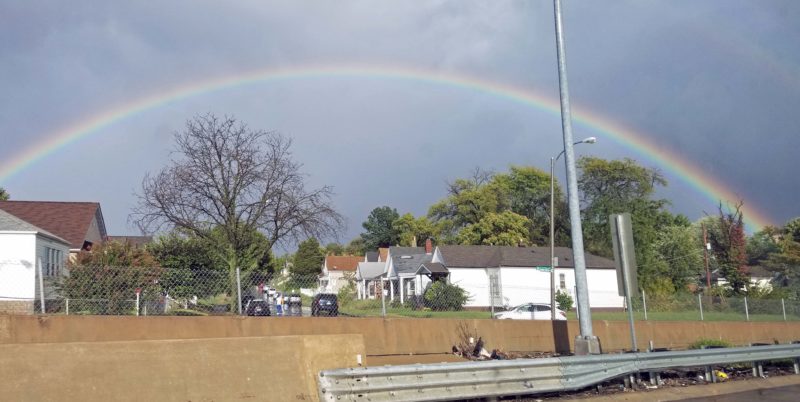Today, Ted and I took Julian and Teddy to see the Cahokia Mounds. Cahokia Mounds is a UNESCO World Heritage Site. Originally the site of a city of 10,000-20,000 people (larger than either London or Paris at that time), it was the site of the largest prehistoric native civilization north of Mexico. Monk’s Mound at Cahokia is the second-largest mound in the world. In fact, Monk’s Mound has a larger base than the Great Pyramid of Cheops (also a UNESCO WHS), although it is not as high as that pyramid. Eighty of the 120 original mounds at Cahokia have survived. The most direct route from our house to the park is I-70, so we crossed the Mississippi River via one of my favorite bridges: the Stan Musial Bridge at St. Louis.
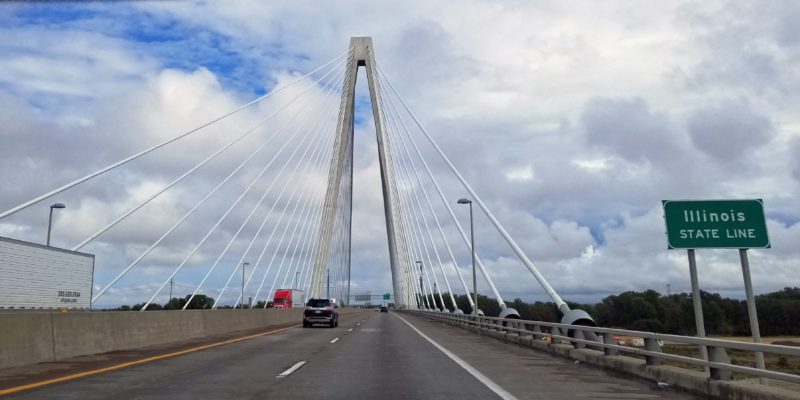
The entrance to the park’s Interpretive Center is impressive.
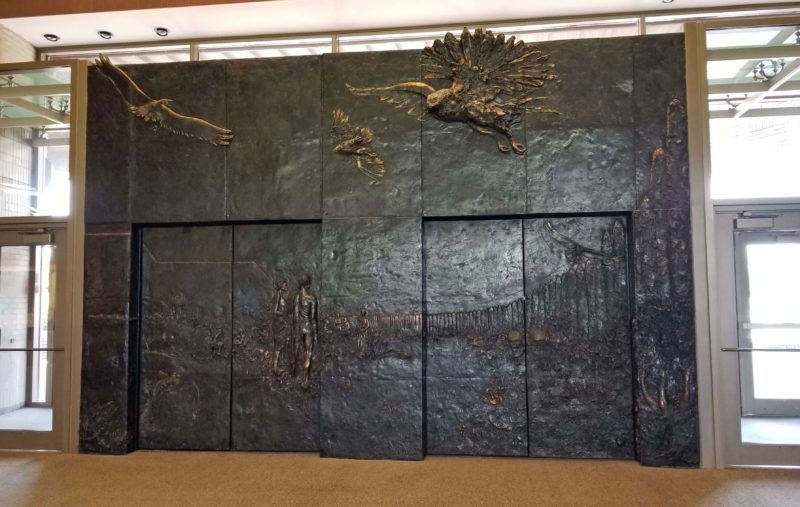
These are called the “twin mounds.” Conical mounds like the one on the right are always burial mounds; flat mounds like the one on the left usually indicate a place where citizens lived. The higher one’s social rank, the higher one lived on the mound. Commoners’ homes surrounded the base of the mound.
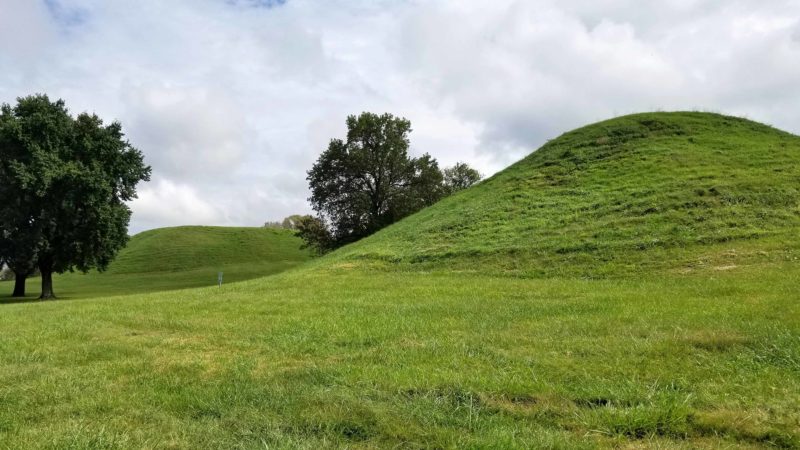
We saw a herd of deer on our guided tour of the park. The tour guide said deer are everywhere in the park.
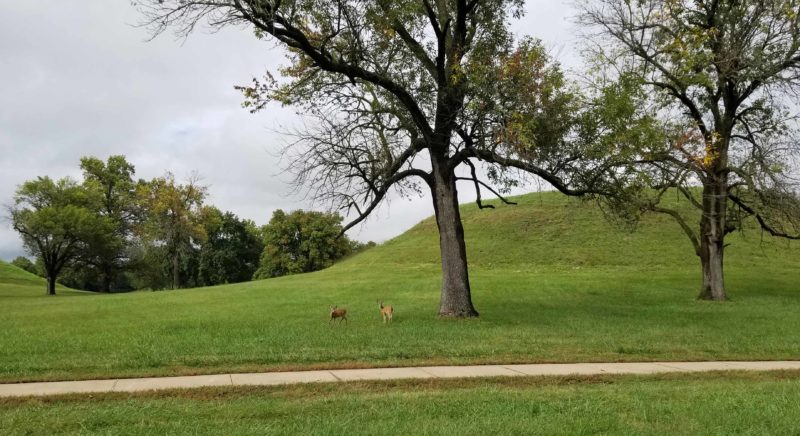
The park’s big attraction is Monk’s Mound, the largest one. This is also a flat mound, but it is so large that there are four levels of social importance on it. Because it is so large, it is likely that an important leader (a king-like official) lived at the top of Monk’s Mound. You can count three terraces below the top of the mound if you look at the outline of the mound on its left side.
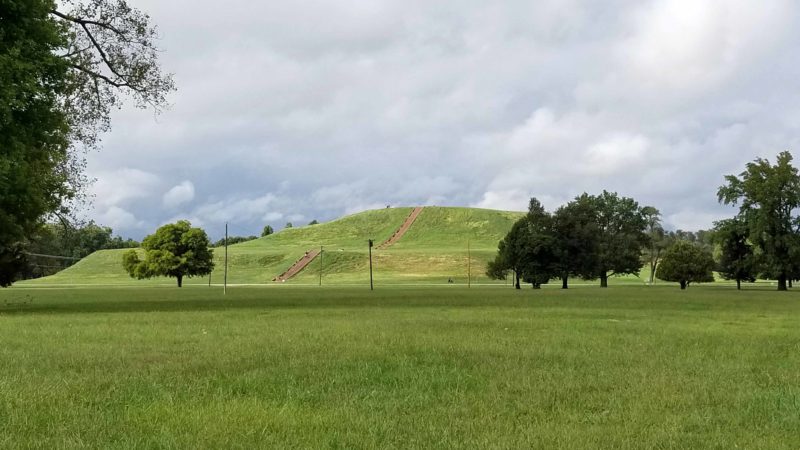
Every visitor’s to-do list includes climbing to the top of Monk’s Mound, and our group was no different. The two young men nearest the bottom of the stairs are our boys. There are two flights of stairs on Monk’s Mound with a total of 154 steps. Julian climbed them twice.

Here are Julian and Teddy after they reached the top of Monk’s Mound.
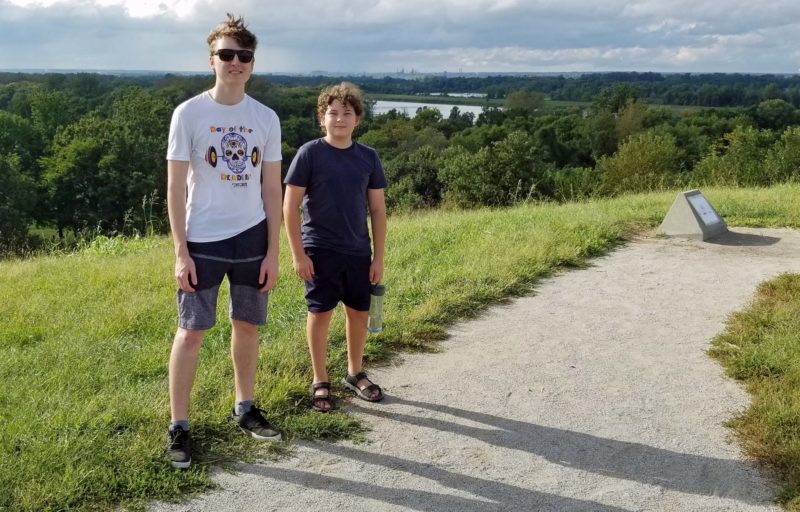
Julian got creative on his way down. Teddy (at the top of the flight) simply used the stairs.
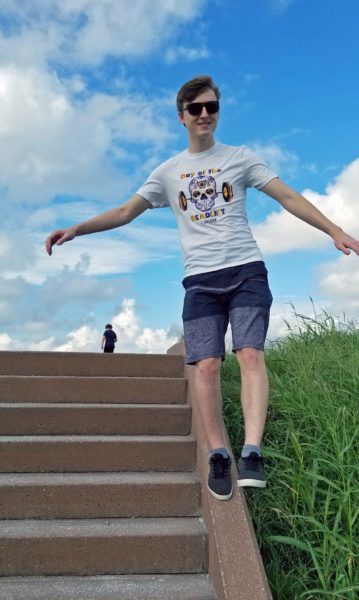
There’s a nice view of the park from the top of Monk’s Mound. You can see another, smaller flat-topped mound in the upper center of the photo below.

From the top of Monk’s Mound, it’s also possible to see the St. Louis skyline, including the Gateway Arch. (Due to the clouds, you have to look closely to see the Arch.)

Cahokia Mounds includes a structure called “Woodhenge.” It is the astronomical equivalent of England’s Stonehenge, with 48 poles set around its circumference and another pole in its center. At the spring and fall equinox, there are celebrations at Woodhenge. If you stand in alignment with two of the outer poles and the center pole at sunrise on the equinox, then look east, you can see the sun rise over Monk’s Mound in line with the center pole. The dark, flat surface behind the center pole in the lower center of the photo is Monk’s Mound.
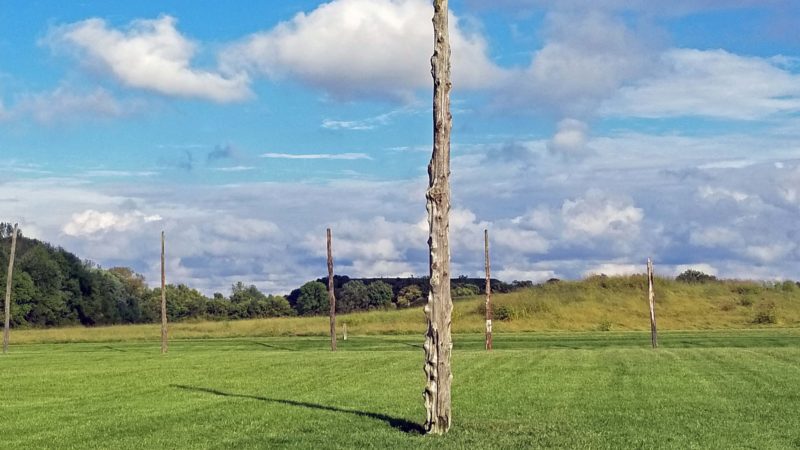
Rain showers moved into the area on our way home and we saw a stunning rainbow. It was a pretty way to end an enjoyable afternoon with two of our grandsons.
